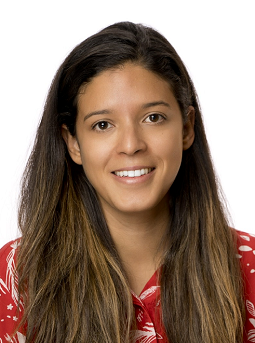Postdoc in mapping brain microstructure and its functional correlates
Are you fascinated by modeling tissue microstructure from high quality diffusion MRI acquisitions, exploring its morphological validity against novel 3D histology imaging technologies and investigating its correlates to the communication speed of brain pathways? How does disease impact the microstructure, and can you predict the impact on saltatory conduction velocity along white matter axons? Are you curious if biophysical models or machine learning are the best modeling approaches? Try it out!
Join our diverse research group headed by Professor Tim B. Dyrby at the Danish Research Centre for MR (DRCMR) at Copenhagen University Hospital - Amager and Hvidovre in the Copenhagen area of Denmark. We have all the expertise to leverage your scientific curiosity and develop you as a researcher. Take part to make a difference in predicting how brain diseases impact patients for establishing future diagnostic tools. The research is supported by the European Research Council (ERC) consolidator project “Non-invasive Conduction Velocity Mapping in Brain Networks” - CoM-BraiN. The research will also be carried out at the Department of Applied Mathematics and Computer Science at the Technical University of Denmark (DTU Compute) with access to large scale computing facilities.
Your responsibilities:
- To establish machine learning and/or biophysical models for mapping axon morphology and cells in health and disease from diffusion MRI and quantitative MRI acquisitions.
- To explore diffusion MRI parameters for obtaining the best model fits using a powerful preclinical MRI scanner or a clinical MRI scanner.
- To verify your models via diffusion MRI simulations, validate your models against 3D histology data, and correlate them with functional data.
- To actively collaborate and create synergies with group members, i.e., taking part in image analysis and participating in the collection of 3D histology data. We use nanoscopic 3D imaging using large-scale x-ray synchrotron imaging facilities, microscopic imaging using Light-sheet fluorescence Microscopy experiments, and Electron Microscopy. Animal models or tissue samples will be made for you by team members.
Your profile:
You should be a highly motivated open-minded team player with the following qualifications:
- Ph.D. degree in MRI physics, computer science or relevant field with a foundation in MRI data modelling.
- Interest in experimental MRI techniques. It is a plus if you have experience with preclinical scanner systems but is not a requirement as we will train you.
- Proven expertise in biophysical modelling or machine learning models and working with Monte Carlo simulations.
- Experience in 3D histology techniques such x-ray synchrotron imaging and Light-Sheet Fluorescence Microscopy (LSFM) is a plus but not a requirement as you will be introduced to this.
- Fluency in English writing and scientific communication.
- Demonstrated ability to work independently and think critically, while also effectively collaborating and contributing to the research team.
About us:
The project will be carried out at the Danish Research Centre for Magnetic Resonance (DRCMR) which is a leading research centre for biomedical MRI in Europe (www.drcmr.dk). Our mission is to triangulate MR physics and basic physiology from preclinical to clinical research. Approximately 75 researchers from a diverse range of disciplines are currently pursuing basic and clinically applied MR research and its validation with a focus on structural, functional, and metabolic MRI of the human brain and its disorders. The DRCMR is embedded in the Department of Radiology and Nuclear Medicine, a large diagnostic imaging department that houses all biomedical imaging modalities at the Copenhagen University Hospital - Amager and Hvidovre. The hospital has strong collaborative links with the Technical University of Denmark and is part of the newly established organisational framework, The Technical University Hospital of Greater Copenhagen.
The DRCMR has a state-of-the-art MR research infrastructure enabling translational research, which includes a pre-clinical 7T Bruker MR scanner, and six whole-body MR scanners (one 7T, four 3T, and one 1.5T scanners). The DRCMR has high performance computing cluster facilities, pre-clinical labs, a neuropsychology laboratory, an EEG laboratory, and two laboratories for non-invasive brain stimulation.
Our preclinical labs perform basic research in functional, microstructure, and plasticity imaging centred around the 7T Bruker BioSpec MRI system. The preclinical labs include a GMO2-classified virus lab fully equipped with stereotaxic surgery equipment, and electrophysiology facilities. Our cross-disciplinary research team is designing and validating new types of diffusion MRI and quantitative MRI imaging technologies for non-invasively disentangling the microstructure of brain networks and their function. Here, it is key to have a true interest in how the microanatomy and saltatory conduction velocity are related in the normal, and how it impacts brain function in the diseased brain. Our vision is translating our research to clinics to improve future non-invasive imaging technologies for better patient diagnosis.
Your position:
The candidate will be employed for a period of 24 months with the possibility for an extension at the Danish Research Centre for Magnetic Resonance where he/she will be an active part of the Microstructure and Plasticity Group (drcmr.dk/map) and the Preclinical Method group, both led by Professor Tim B. Dyrby.




